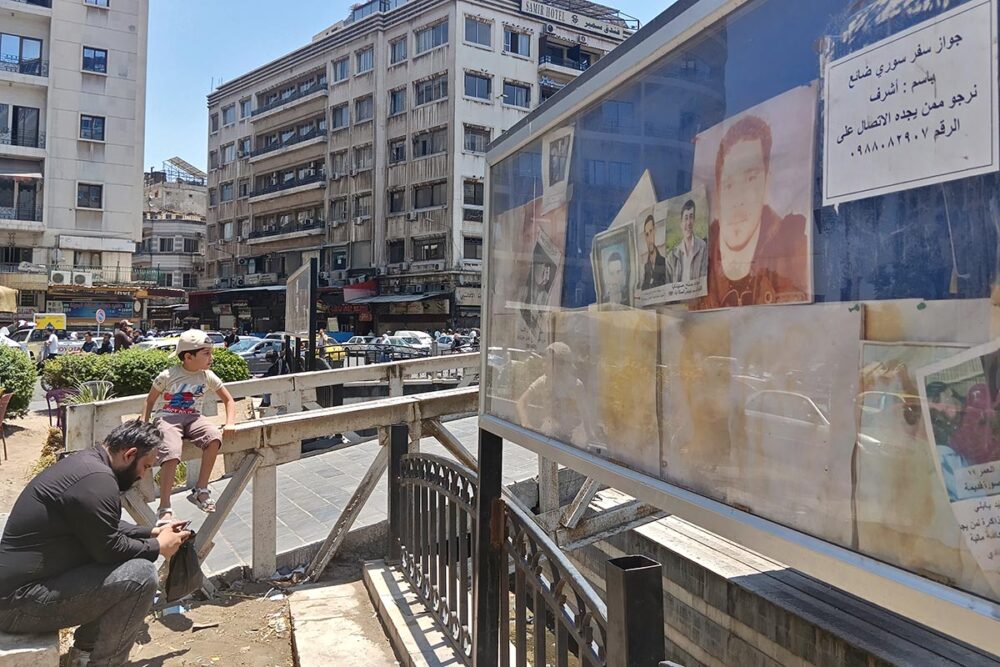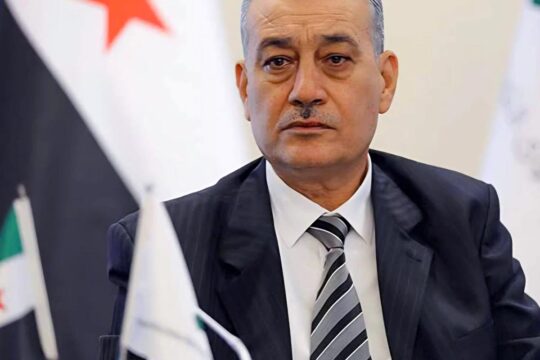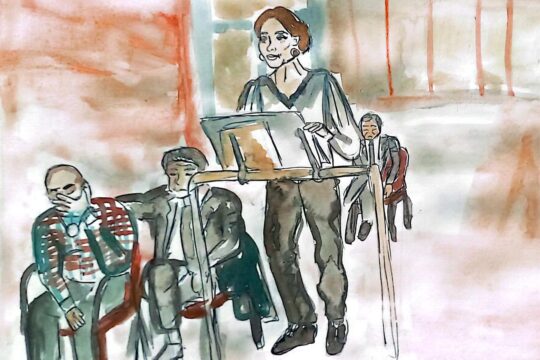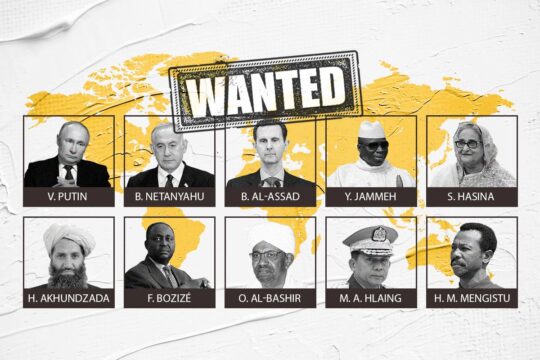On May 17, 2025, while issuing Decree No. 20 that established the National Commission for Transitional Justice (NCTJ, see Part 1), the Syrian transitional presidency issued Decree No. 19, establishing the National Commission for the Missing and Forcibly Disappeared (NCM). For many Syrians, especially the families of the disappeared, this decree is more than an administrative step. It is a long-overdue recognition of one of the darkest legacies of Syria's recent past and a cautious opening toward truth and redress.
According to Decree No. 19, the newly formed NCM is tasked with "researching and revealing the fate of the missing and forcibly disappeared persons, documenting cases, establishing a national database, and providing legal and humanitarian support to their families." Unlike the NCTJ, the mandate of this commission is not restricted to crimes committed by one actor or group. In this regard, it presents a more inclusive framework, one that theoretically encompasses the tens of thousands of people disappeared by the Assad regime, ISIS, and other armed factions, including state-aligned militias.
Importantly, the phenomenon of enforced disappearance in Syria predates the 2011 uprising. It is a practice rooted in the regime's security and intelligence apparatuses since the 1980s, and it escalated dramatically during the post 2011 conflict. According to the Syrian Network for Human Rights (SNHR), over 111,000 individuals remain forcibly disappeared in Syria, the vast majority at the hands of the Assad regime. These figures are conservative estimates due to the fear of reprisal that deters many families from reporting cases. The scale and longevity of enforced disappearance in Syria make it not just a wartime crime, but a state strategy of repression that has spanned decades.
Yet, as with the transitional justice process, the promise of this Commission risks being overshadowed by gaps in mandate, process, capacity, and participation. The decree remains vague on crucial operational elements: the authority's investigative powers, mechanisms for international cooperation, and criteria for engaging families and victims' associations in shaping its direction.
Why Two Separate Commissions?
The decision to establish two commissions was not incidental. It stemmed from years of advocacy by Syrian civil society organizations, victim groups, and legal experts who argued that the magnitude and complexity of the issue of the missing deserved its own institutional and operational focus. Several factors informed this view. One is about specialization and urgency. The search for the missing and the forcibly disappeared involves urgent humanitarian, legal, and forensic challenges that are different in nature from broader transitional justice efforts. Families have waited years to know the fate of their loved ones. The emotional and logistical weight of this work requires dedicated structures. A second factor is the need to avoid bureaucratic overload.The fear was that combining the two mandates would dilute both missions. Transitional justice bodies, particularly in a fragile context like Syria, are already burdened with complex demands. A separate body allows for clearer planning, timelines, and resource allocation. Finally, institutions like the IIMP as well as the Truth and Justice Charter, signed by several Syrian civil society groups and victims’ associations, affirmed the need for a specialized commission.
The separation was therefore seen as a strength, not a fragmentation, provided that robust coordination between the two commissions is ensured.
Critical Points of Concern and Opportunity
While the NCM purports to be victim-focused, key associations, such as Families for Freedom and the Caesar Families Association, report they were not consulted in shaping the decree. This top-down approach replicates the very patterns of marginalization that survivors have long resisted. Inclusion must start from the drafting table, not after the institution is already set up.
The NCM's role is also described in purely humanitarian and documentation terms. There is no mention of whether the data it collects will feed into judicial processes or contribute to legal accountability. This risks turning the NCM into a technocratic archive instead of a bridge toward justice.
Syria lacks in-house capacity in critical areas such as forensic anthropology, mass grave preservation, and DNA analysis. The risks here are high: improper exhumation or mishandling of remains can destroy evidence and retraumatize families. International partnerships, such as with the International Committee of the Red Cross or the Geneva-based UN's Independent Institution on Missing Persons in Syria (IIMP), are essential to build capacity and ensure professional standards.
Indeed, reports from the SNHR emphasize that for the NCM to be effective, it must work in complementarity with international efforts, particularly the IIMP. SNHR calls for joint mechanisms of information exchange, safeguards against duplicating efforts, and formal engagement with survivors and family associations.
Many cases of enforced disappearance are also atrocity crimes. The absence of a clear coordination mechanism between the NCM and the NCTJ raises concerns about institutional silos. Shared data, joint protocols, and mutual accountability are not technical luxuries, they are moral and strategic necessities. The Syria Justice and Accountability Centre (SJAC) also notes that while Decree 19 is less restrictive than its counterpart Decree 20, it lacks specific accountability pathways, including a clear institutional link to judicial or prosecutorial bodies that could ensure the data and findings are used in legal proceedings. There is a need for a national law, not merely a presidential decree, that would formally establish the commission's legal standing, mandate its cooperation with the public prosecution or special courts, and define how its documentation can trigger criminal investigations or reparative processes. Without such structural anchors, the Commission risks becoming a symbolic gesture rather than a pathway to justice.
Families continue to fear reprisals. Decree 19 makes no mention of witness protection, anonymity guarantees, or legal remedies if the state fails to act. Without such safeguards, trust in the commission will erode quickly. The NCM must not operate in the shadows either. It should hold regular public briefings, publish its methodology and internal regulations, and offer clear procedures for families to engage. Public trust hinges on visible integrity. As the NGO Synergy for Justice notes, "rebuilding trust will require an unprecedented level of openness and survivor inclusion".
No one should vanish twice
The work of the NCM must not be reduced to a technical task of case tracking. Every documented name carries a shattered life story, a family waiting for answers, and a community marked by silence. Recognition must go hand-in-hand with dignity, psychosocial support, and memorialization.
The legacy of enforced disappearance in Syria is not just a record of brutality. It is also a testament to the extraordinary resilience of those who refuse to forget. Their courage should not be met with administrative indifference or symbolic gestures. It should shape the heart of Syria’s reconstruction of justice.Decree 19 can still become a turning point, but only if its implementation is corrected and expanded in dialogue with victims and civil society. As with the NCTJ, the Missing Persons Commission will either reinforce the credibility of Syria’s transition or deepen mistrust.
There is no transitional justice without answers to the disappeared. And there are no answers without the voices of families leading the way. The task ahead is immense. But the principle is simple: no one should vanish twice—once in life, and again in memory.
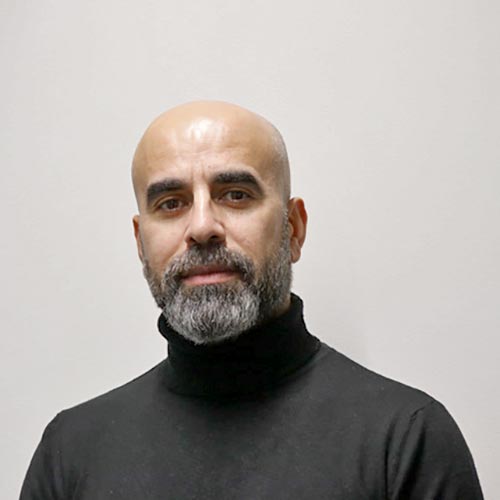
Mustafa Haid is a Syrian human rights advocate, senior advisor, and writer with over 15 years of experience working on transitional justice, accountability, civil society, and gender mainstreaming in Syria and beyond. He is the founder of the Dawlaty organization and holds a Master’s degree in Conflict Resolution from King’s College London.


